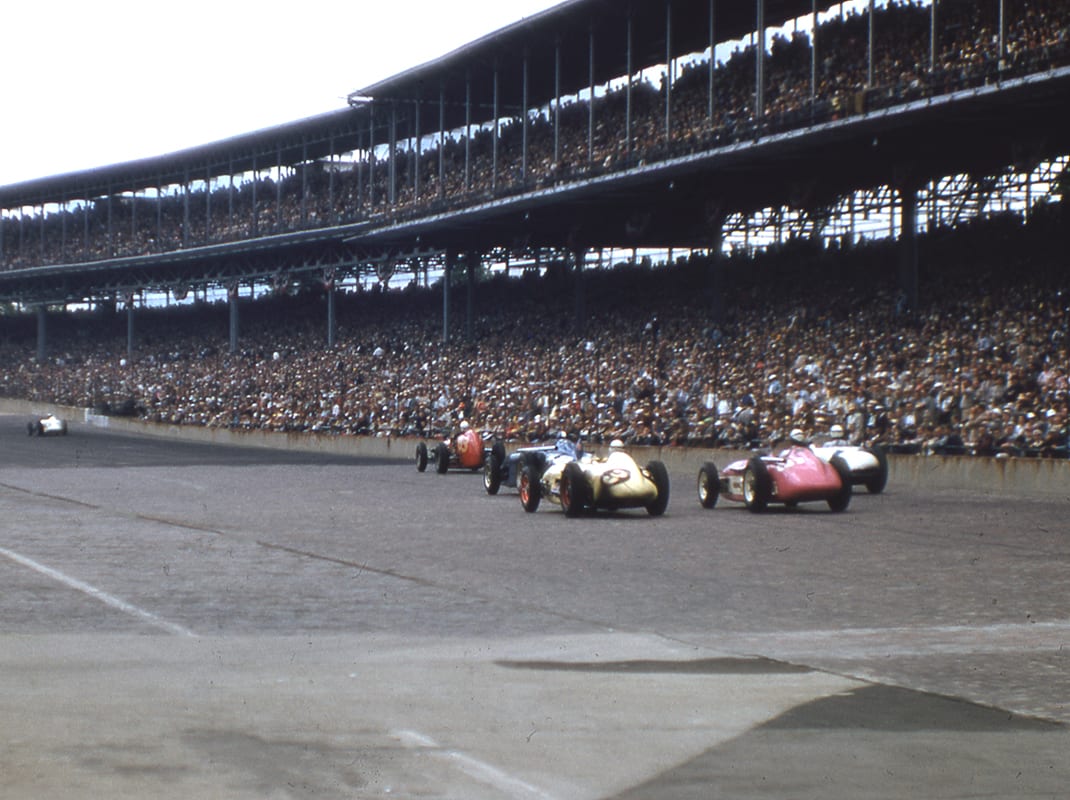Two weeks after Indianapolis, during a race 4,000 miles away, another multi-car crash sent a car over the fence. This one did happen on the frontstretch. The results were mind-numbing.
Early in the running of the 24 Hours of Le Mans, Pierre Levegh lost control of his Mercedes attempting to avoid another car that had suddenly slowed in order to pit. He launched up an embankment and slashed through a packed spectator area. His magnesium-bodied car burst into flames, flinging flaming shrapnel through the crowd.
Fans died horribly. The death toll has long been reported as in the 80s. An accurate number, however, has never been established, or at least has never been made public from the police reports. The actual number, according to inside sources, was well in excess of 100.
Regardless, it was a tragedy of unimaginable proportions. The result was a worldwide outcry against auto racing. France, Germany, Spain, Switzerland and several other countries immediately banned auto racing.
Back in the states, the cry for action, simmering after the Vukovich accident, became a full roar. Oregon Senator Richard Neuberger, during a speech in the United States Senate, urged President Dwight Eisenhower to introduce a bill that would ban auto racing in this country. Public sentiment ran in his favor.
In the midst of the clamor came another death. On July 10, 1955, Indianapolis pole winner Jerry Hoyt died racing a sprint car in Oklahoma City.
Auto racing was in trouble.
Suddenly at this crucial time, AAA was not there to lend its political clout. On Aug. 4, with a terse statement that left American auto racing reeling, the AAA announced that at season’s end its contest board would be eliminated.
Shock waves rolled through all of racing. The decision not only aversely affected the upper echelons of the sport, Indianapolis and the Championship Trail, but the entire ladder system of midgets, sprint cars and even stock cars that also ran under AAA’s vast umbrella.

While AAA’s withdrawal had been rumored, the hasty dismissal of the contest board was a bombshell. The assumption had been that should they get out there would be a transitional period to enable auto racing to re-establish itself.
Immediate action was needed. Fortunately, that action came swiftly.
At the Indianapolis Motor Speedway’s offices in downtown Indianapolis, speedway owner Tony Hulman assembled a group of participants to discuss how to save auto racing.
A committee was formed consisting of Hulman, car owner Bob Estes, promoter Tom Marchese and George Ober, representing the town of Speedway, Ind. Conveying the urgency of the situation, the group was appropriately named, “The Temporary Emergency Committee.”
Driver and mechanic representatives were added. And perhaps somewhat surprisingly for a group of racers, they acted swiftly and in one accord. A week after AAA’s announcement an open meeting was held. On Sept. 16, another meeting took place at the Indiana State Fairgrounds, site of the next day’s Hoosier Hundred. There, proposed bylaws were distributed and discussed. That same day, papers were filed with the Indiana Attorney General’s office forming a nonprofit racing organization — the United States Auto Club.
Those swift, decisive actions saved auto racing as we know it in this country. Being organized gave racing a strong political voice and USAC’s emphasis on improving safety helped defuse those who sought to destroy the sport.
In Europe, auto racing also began a slow recovery. Germany, France and Spain lifted their bans as tracks were improved.
In Switzerland, however, the ban remains to this day. A reminder of just how close our great sport came to dying.
